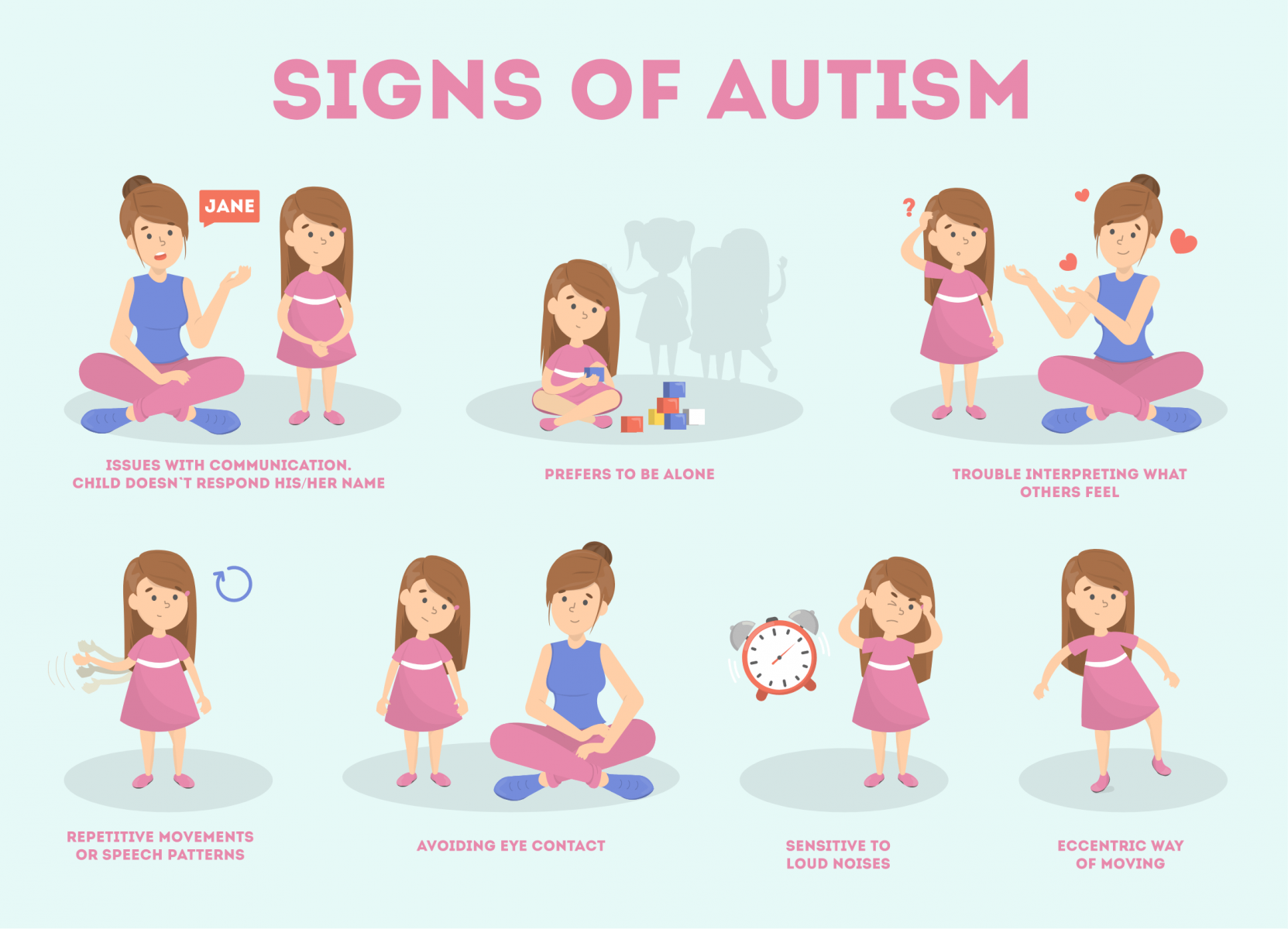The Function of Education And Learning in Sustaining Pupils with Autism: Ideal Practices
The Function of Education And Learning in Sustaining Pupils with Autism: Ideal Practices
Blog Article
Comprehending Autism: A Comprehensive Guide to Signs And Symptoms and indicators
Autism Spectrum Disorder (ASD) incorporates a large range of features that can considerably influence an individual's social communications and everyday performance. Acknowledging the symptoms and signs, such as challenges with eye call, social communication troubles, and sensory sensitivities, is critical for early treatment. Understanding these subtleties not only aids caretakers and educators in supplying appropriate support yet also promotes an extra inclusive atmosphere for people with ASD. As we explore the complexities of autism, it comes to be important to think about just how these signs materialize differently across the range and what effects they hold for effective intervention methods.
Review of Autism Range Problem
Specifying Autism Range Problem (ASD) entails identifying it as an intricate neurodevelopmental problem identified by a series of obstacles in social communication, interaction, and behavior patterns. The term "range" shows the large variability in signs and their seriousness, which can differ significantly from one individual to an additional. ASD typically manifests in very early childhood years, although some people may not receive a diagnosis till later on in life.
Aspects influencing the development of ASD include environmental variables and hereditary predispositions, although the exact reasons stay under investigation. Diagnosis usually counts on behavioral assessments, as there are no clear-cut clinical tests for ASD. Early treatment is vital and can substantially enhance outcomes, concentrating on boosting communication skills, social communications, and adaptive behaviors.
People with ASD may additionally display unique toughness, such as phenomenal interest to detail or details areas of knowledge. Understanding the diverse nature of ASD is important for cultivating an inclusive setting that accommodates neurodiversity. Proceeded research study is vital for establishing reliable interventions and assistance systems, enabling people with ASD to thrive and meet their potential within culture.
Common Indications of Autism
Recognizing the usual signs of Autism Spectrum Problem (ASD) is important for very early recognition and intervention. These indications can differ commonly in extent and presentation, however particular qualities are regularly observed in people with ASD.
One of one of the most widespread signs is a significant problem in establishing and keeping eye get in touch with. People may likewise display minimal interest in social interactions and reveal a choice for singular play. Recurring behaviors, such as hand-flapping, rocking, or spinning items, often emerge early in childhood. Furthermore, some kids might create rigorous regimens and become distressed if these routines are disrupted.
Sensory sensitivities are also common; people might panic or underreact to sensory stimulations, such as noises, lights, or structures. autism. Language growth can be irregular, with some kids displaying delayed speech or using language in uncommon means, including echolalia-- repeating sentences or expressions listened to in other places
It is important to keep in mind that not every individual with ASD will display all these indicators, and the level of these habits can differ significantly. Early additional info acknowledgment enables for timely support and sources, improving the lifestyle for those on the range.
Social Interaction Challenges
Social interaction difficulties are a trademark of Autism Range Condition (ASD), impacting a person's capability to engage effectively with others. These troubles can materialize in numerous methods, including obstacles in starting and maintaining discussions, understanding social signs, and reacting appropriately in social communications.
Individuals with ASD might deal with nonverbal interaction, such as eye call, facial expressions, and body movement. This can lead to misconceptions, as their communicative intent may not be appropriately interpreted by others. In addition, they may find it tough to grasp the subtleties of tone and context, which are vital for effective communication.
In group setups, individuals with ASD may really feel overloaded and may not understand just how to join in conversations (autism). They may additionally exhibit atypical conversational patterns, such as monologuing concerning particular rate of interests without recognizing social reciprocity
Furthermore, these obstacles can result in social isolation or problems in creating partnerships, as peers may misinterpret their habits or interaction design. Understanding these social communication obstacles is crucial for cultivating encouraging atmospheres that advertise social abilities development and enhance the quality of communications for individuals on the autism range.
Sensory Sensitivities and Feedbacks
Lots of people with Autism Spectrum Condition (ASD) experience increased sensory level of sensitivities that can significantly influence their day-to-days live. These sensitivities may materialize as over-responsiveness or under-responsiveness to sensory stimulations, consisting of noises, lights, structures, preferences, and smells. For example, an individual with ASD may discover everyday sounds, such as a vacuum cleaner or crowded environments, extremely stressful, causing anxiousness or meltdowns. Alternatively, some may display an indifference to discomfort or severe temperature levels, which can position safety and security problems.
Sensory processing distinctions in individuals with ASD can also influence their ability to participate in social communications and routine tasks. A youngster who is delicate to touch might withstand physical love or stay clear of particular clothes materials. Alternatively, a choice for sure structures or preferences can limit nutritional options and develop challenges during mealtimes.
Recognizing these sensory level of sensitivities is necessary for acknowledging the unique experiences of individuals with ASD. Awareness of their sensory profiles can foster better interaction and assistance approaches, producing an atmosphere that accommodates their requirements and improves their quality of life. Ultimately, acknowledging sensory level of sensitivities is a critical component of understanding the more comprehensive spectrum of autism.

Supporting Individuals With Autism
Reliable support for individuals with Autism Range Disorder (ASD) is important for improving their total wellness and cultivating self-reliance. Support methods should be customized to meet the one-of-a-kind demands of each person, considering their obstacles and strengths.

Social skills training can likewise play an essential duty. autism. Involving individuals in group activities or role-playing situations can improve their capacity to browse social communications. Additionally, it is important to enlighten member of the family, caretakers, and peers concerning ASD to foster a inclusive and supportive community
Final Thought
By cultivating enhanced communication and social abilities, people with autism can navigate their settings extra effectively. Ultimately, raised recognition and support can significantly boost the high quality of life for those affected by ASD.
Autism Range Condition (ASD) encompasses a vast variety of characteristics that can dramatically affect a person's social communications and daily performance.Individuals with ASD might struggle with nonverbal interaction, such as eye contact, face expressions, and body language.Numerous people with Autism Spectrum Problem (ASD) experience heightened sensory level of sensitivities that can considerably influence their everyday lives.Sensory handling differences in people with ASD can also impact their ability to engage in routine activities and social communications.Understanding these sensory level of sensitivities is important for identifying the unique experiences of individuals with ASD.
Report this page